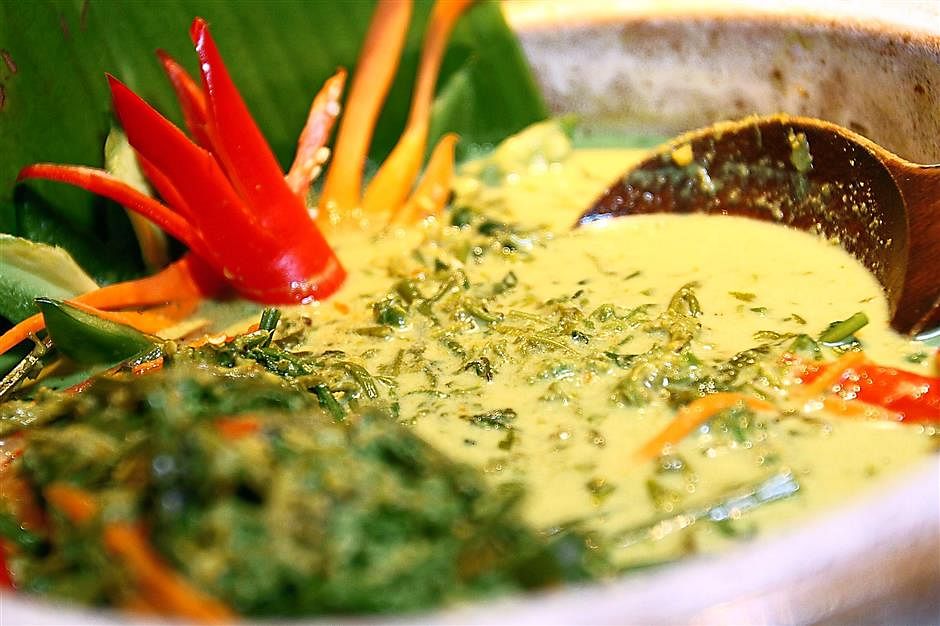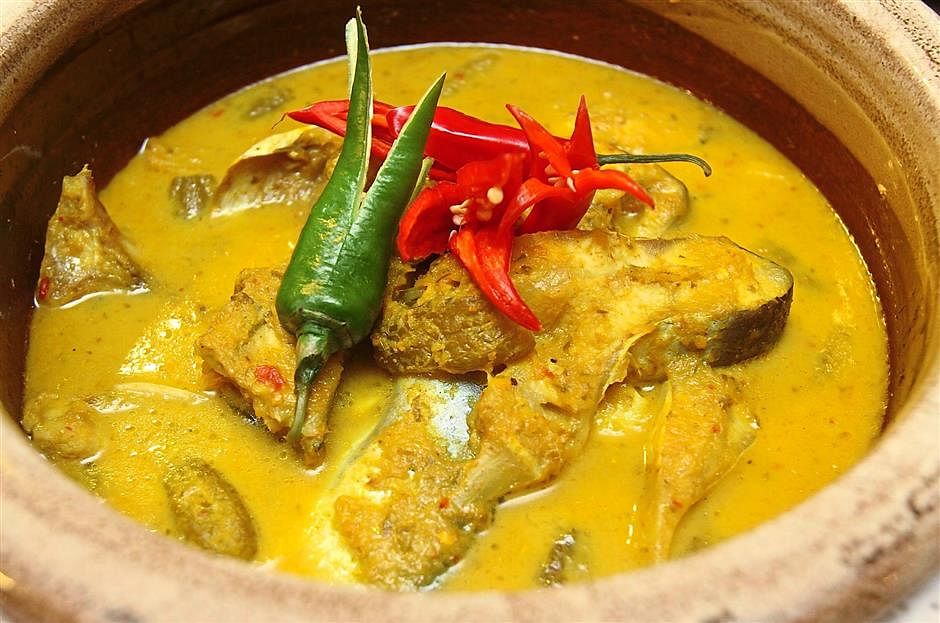(THE STAR/ASIA NEWS NETWORK) - Imagine the thrill of not just savouring your food, but also cooking it and even foraging in the wild or harvesting it at a nearby farm. This was what we experienced when we visited the royal town of Kuala Kangsar recently, on a media familiarisation trip organised by Tourism Malaysia and Destination Perak.
Growing one's own food - or foraging for it - has always been a tradition in kampungs and, to a lesser extent, in towns and cities in Malaysia. With modernisation, the trend is that more people buy their ingredients from markets, grocery stores or other vendors and planting and foraging for one's own food might become a lost art, unless preserved.
Preserving a lost art
In recent years, with increasing costs of living and also an increased concern about the heavy use of pesticides and fertilisers on commercially grown produce, some city and town dwellers have returned to planting their own produce in their own backyards. And a few still harvest herbs and other edible plants from the wild. As a child, I remember helping my aunt in Penang to pluck daun kaduk (wild pepper leaves) growing in a nearby field behind her house to make otak-otak. I also know of a neighbour who grows his own kangkung (water convolvulus), sawi (mustard greens) and other herbs and spices in his backyard.
It was a pleasant surprise to discover that in the villages, folk still practise growing and foraging food, when we visited Kampung Labu Kubong, a village less than 20km north of Perak's royal town.
We stayed the night at a host family's home and joined them in their daily activities.
Kampung stay
When we arrived at Labu Kubong, it was in the afternoon. Despite there being a slight drizzle, we eagerly followed our host out to catch fish - with our bare hands - in the nearby muddy padi fields. Some of the fish that can be found in paddy fields include ikan keli (catfish), ikan belut sawah padi (eel) and ikan haruan (snakehead).
We discovered that ikan pekasam (fermented freshwater fish preserved with salt, palm sugar, toasted rice grains and asam keping), one of the delicacies Kuala Kangsar is famous for, is made with fish caught from the sawah padi. Although we didn't catch enough fish for a meal, it was still a fun experience. Fortunately, out hosts had already prepared an ample store of fish earlier.
The next morning started early. The friendly kampung folk took us around to visit nearby farms and to forage for edible shoots.
We visited a madu kelulut farm, which keeps stingless bees. The honey was thin and tangy, compared with regular honey. According to the beekeeper, madu kelulut contains more vitamins and minerals than regular honey and is sought after for its medicinal properties. It also makes a refreshing drink when mixed with water.
We walked along narrow kampung roads past attap houses and farms. When we came to an open field, the friendly uncle waiting for us said we had to "earn our keep" harvesting the wild edible greens. We looked at the tall lalang (grass) and bushes hesitantly, worried about encountering leeches, snakes, monitor lizards and other creepy crawlies. Our task was to gather pucuk paku (fiddlehead ferns) growing by a ditch to make rendang paku for lunch.

Plucking up our courage, we made our way through the thick vegetation carefully to pluck the pucuk paku, which was then transported back to the penghulu's (headman) home on the back of a motorbicycle.
When we made our way back to the kampung, grass mats were already spread on a grassy slope facing the padi field, in front of the penghulu's house. The smell of belacan and other spices wafted through the air, from the open-air kitchen at the back of the house.
While some of us helped prepare the ingredients and dishes for lunch, a few of us sat on the mats, learning to make banana leaf moulds for kuih limas (a kind of Malay cake). Also known as kuih pelita, it is similar to the Thai tako dessert, but with a slight variation. The Thai version is made from corn flour and the moulds are made of pandan leaves, while kuih limas is made from rice flour and the moulds, banana leaves.

The lunch spread included sayur kemahang masak lemak (vegetables cooked in a creamy spicy gravy), gulai patin masak tempoyak (patin fish cooked in spicy fermented durian sauce), pucuk paku masak rendang (fiddlehead ferns cooked with dry spices), ikan masin goreng (fried salted fish), ikan pekasam goreng (fermented fish stir-fried with chillies and onions), sambal kelapa (coconut cooked with dry spices) and ulam (traditional Malay herb salad) served with rice. This was the best meal during the trip - not only was it home-cooked and delicious, but the ingredients were also partly sourced from the land around us.
We have re-created some of the recipes from that meal, so you can try them at home.

SAYUR KEMAHANG MASAK LEMAK
INGREDIENTS
10 bird's eye chillies or to taste
3cm belacan
100g ikan bilis (anchovies)
1 large onion
1 tsp turmeric powder
1 litre water
500g taro shoots
2 stalks lemongrass, crushed
10 pieces asam keping
coconut milk from 1 coconut
salt, to taste
METHOD
Grind the chillies, belacan, ikan bilis, onion and turmeric powder together. Pour the water into a pot and bring to a boil. Add the taro shoots, lemongrass and asam keping. Boil until the taro shoots are soft. Lower the heat and stir in the coconut milk and ground ingredients. Bring to a boil and simmer for 10 minutes. Finally, add the salt and remove from heat.

GULAI PATIN MASAK TEMPOYAK
INGREDIENTS
4 red chillies
5 red chilli padi
3cm fresh turmeric or 1/2 to 1 tsp turmeric powder
2 stalks lemongrass, crushed
2 small ladlefuls fermented durian or to taste
1 cucumber
cooking oil
1 medium-sized patin fish, washed
3 to 4 cups water (depends on how thick you want the gravy to be)
salt to taste
a pinch of sugar
1 bunch Vietnamese coriander/laksa leaves
1 to 2 pieces asam keping (optional)
METHOD
1. Roughly blend or pound the chillies, turmeric and lemongrass. Add the fermented durian into the mixture and mix well (use your hands if necessary). Peel and slice the cucumber and toss in the mixture.
2. Heat some oil in a pot and add the mixture. Cook over low heat, stirring it regularly until the mixture thickens slightly. Add the fish and cook over low heat. Add the water, adjusting the amount according to your preference. If you want the gravy to be thicker, use less water. Add salt and sugar and mix well.
3. When the mixture simmers and bubbles form on the surface, mix in the Vietnamese coriander/laksa leaves and asam keping (if using, for a tangier gravy). Cook for another 2 to 3 minutes and then remove from heat. Serve hot, with rice.

PUCUK PAKU MASAK RENDANG
INGREDIENTS
1 bunch fiddlehead ferns
10 to 15 chilli padi
3 red onions
3cm fresh turmeric
3 Tbs cooking oil
a handful of ikan bilis (anchovies) or dried shrimp
coconut milk from 1 coconut
2 pieces asam keping
salt to taste
METHOD
Wash the fiddlehead ferns well and cut into 3cm pieces. Remove the hard bits. Grind or pound the chillies, red onions and turmeric. Heat up the oil in a saucepan or deep wok. Add the ikan bilis or dried shrimp and the ground ingredients, then mix in the coconut milk. Cook over low heat, stirring well and often, so that the mixture does not become lumpy. When the mixture comes to boil, add the fiddlehead ferns. Cook, stirring, until the fiddlehead ferns become soft. Mix in the asam keping and salt. Remove from heat and serve immediately.

SAMBAL KELAPA
INGREDIENTS
2 red chillies
5 bird's eye chillies
2 red onions
a handful dried shrimp, rinsed and soaked in water for 5 minutes
1/2 coconut, grated
2 calamansi limes
1 tsp kerisik
salt to taste
METHOD
Using a pestle and mortar, pound the chillies, onions and dried shrimp. Heat a pan and fry the pounded ingredients without any oil. Add the grated coconut, stirring well. Squeeze over the lime, then add the kerisik and salt. Fry, tossing well, until the mixture is dry. Serve with ulam, the traditional Malay herb salad.

